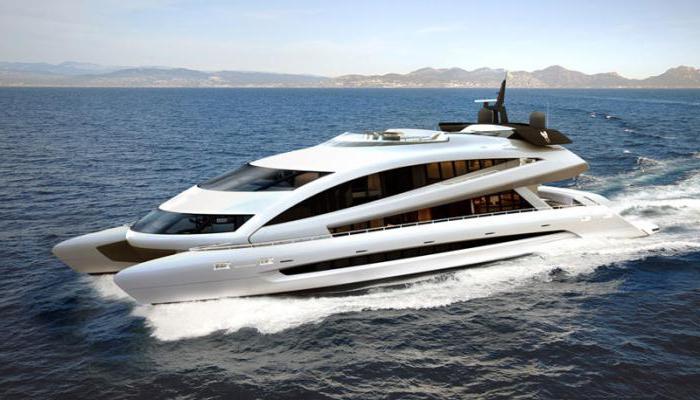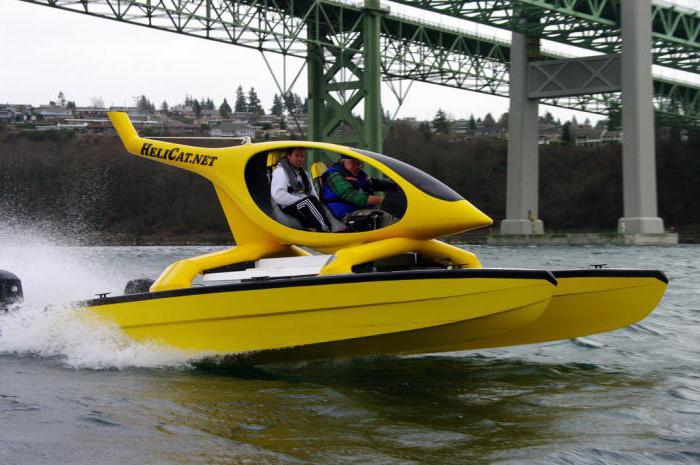How is a motor catamaran different from other boats? This is the name of the vessel, which stands on two (rarely three) floats, interconnected by a common part - a bridge. Standard passenger solutions have an upper deck over the entire width of the connecting part. There are also options when the floating parts are interconnected by simple metal beams.
This design has its positive and negative sides. But where exactly should such a ship be attributed: to bad or good decisions - let the reader decide. In the meantime, let's touch on the history of creation.
History
Translated from Polynesian catamaran - this is ... "raft". Fastened from several logs of a certain thickness, such a craft in the presence of a sail could reach a speed of up to 20 knots (37 km / h). Various tests led to the fact that the extreme logs became thicker and the middle part began to rise above the water. So there was a type of ship, now known as a catamaran. The motor version arose much later in Europe. Experiments of such a plan began in England in the 17th century. There were such developments in the Russian Empire. The first ship was launched in 1834 - it was a boat about two hulls for walking along the Neva. For almost half a century, these ships performed only a pleasure role, until in 1874 the Catalea appeared - a catamaran ferry that transported across the English Channel. It is noteworthy that the ship could take on board up to 1000 people. But the real development of multihulls was received only in the 20th century.

Based on this principle, military, cargo, transport ships and even racing yachts are now assembled. However, the latter are often of the type “sail-motor catamaran” due to additional equipment.
Description and Features
The main difference between a catamaran and a regular motor yacht is the presence of two hulls. Thanks to this, the main lifting force of such a vessel is concentrated not in the center, but on the sides, which makes it more stable. A well-designed bridge (connecting two parts) allows splashes to go under it during rapid movement, which, in turn, increases the speed of the vessel.
It should also be mentioned that the internal space of the catamaran is much larger than that of the conventional single-hull version. In addition, a more rational use of the bow can be noted, since the vessel does not narrow to the bow.
The next thing you can pay attention to is the maneuverability that a catamaran has. A motor boat, especially in windy weather, is not so easy to deploy. Thanks to a pair of engines on the sides of the wide stern, the catamaran can be deployed almost in place.
However, the presence of two engines is not only an additional, “fallback” option. This is a blow to profitability. But this minus is also a plus. A large catamaran ferry can reach speeds of over 20 knots, which is simply unrealistic to achieve on a single hull. It should be noted that, at the same time, the loading of the vessel practically does not matter.
Owners of boats know that for lifting ashore, a ship will need a trolley-rack of a certain shape. A catamaran can simply be placed on blocks. The presence of two buildings will be a fairly stable support.
Varieties
Ferry crossings - although the most frequent, but far from the only place where the catamaran found its application. The twin-engine version is used in oceanography. It finds its application in ports - for example, as a floating crane. We must not forget about such an area as tourism. The latter is dedicated to the development called Helicat.net. This is also a catamaran, however unusual. In its outlines, this "cat" resembles a helicopter. Weight without motors - 750 kg, with motors - a ton. In addition to the driver, two passengers can be accommodated in the cabin. He will not be able to take off, but a ride with a breeze - completely. Indeed, one of the proposed engines for this vessel develops 69 km / h.

But there are other options. For example, Russian developers have created inflatable motor catamarans. The design of such a vessel consists of a pair of gondola floats, which are interconnected by metal beams, on the basis of which the bridge and the upper deck are assembled. Not only Russia has inflatable developments, and some of them would be worthy of a separate discussion.
Conclusion
Motor catamaran is a rather successful solution, which, due to its design, has a number of advantages compared to a conventional boat. Some of them were described above, but in conclusion, we note that on the market you can find such a version that - packaged in bags, loaded into a car and drove away, while doing this with an ordinary boat will be a bit problematic.